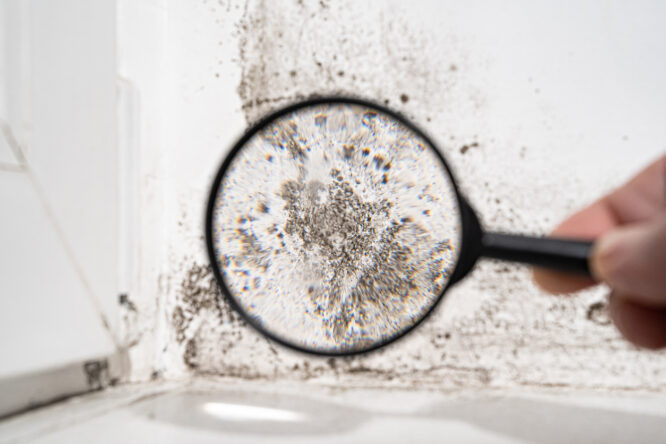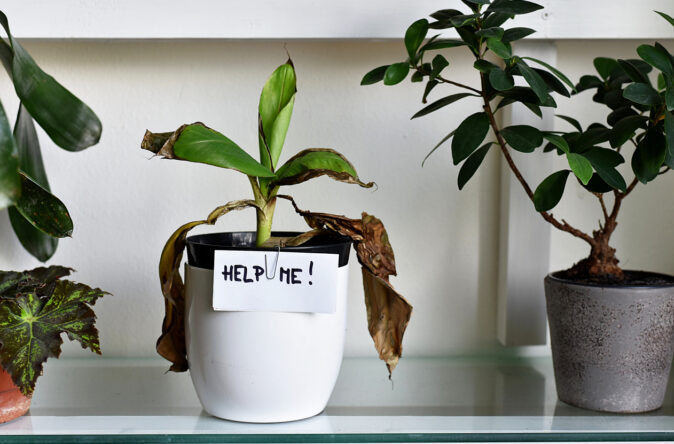Mould isn’t just something to worry about when you spot big black patches on the ceiling.

It’s sometimes hard to spot, especially since it sometimes hides in damp corners, behind walls, or inside air vents. For that reason, many people live with it for ages without realising it’s making them feel off.
From low energy to breathing problems, mould exposure can show up in subtle, everyday symptoms that are easy to brush off or blame on something else. However, if these issues seem to linger, no matter how many vitamins you take or how much sleep you get, mould might be worth considering. Here are some of the warning signs to watch out for.
1. You constantly feel tired, no matter how much sleep you get.

If you’re waking up groggy and dragging yourself through the day despite a decent night’s sleep, hidden mould might be playing a role. Long-term exposure can affect your immune system, making your body work harder behind the scenes. That extra workload can leave you feeling drained, even if you haven’t been doing anything out of the ordinary. It’s not just “being busy”—it could be your body trying to manage something you can’t see.
2. You keep getting headaches for no clear reason.

Frequent, dull headaches that come out of nowhere can be caused by poor air quality—something mould often contributes to. If you feel better when you’re out of the house and worse when you’re at home, that’s a red flag. Some moulds release spores or mycotoxins that irritate the nervous system, which can trigger pressure or tension-type headaches. It’s subtle, but over time it can really wear you down.
3. Your allergies seem worse indoors than outdoors.

If your eyes water, your nose runs, or your throat feels scratchy the moment you step inside, mould could be the culprit. Indoor mould spores can trigger allergy symptoms even when you don’t have traditional seasonal allergies. It’s easy to mistake this for dust or pet dander, but if the reaction happens consistently in one space—like your living room or bedroom—it’s worth looking into what’s lurking behind the walls or under the floorboards.
4. Your asthma flares up more often at home.

Mould and asthma are a rough combo. Even small amounts of mould can inflame the airways, making symptoms worse for those with asthma or other respiratory issues. If your inhaler use has gone up without a clear reason, take note. Kids and older adults are especially sensitive, and flare-ups that improve when you’re out of the house should raise a few questions about indoor air quality and possible hidden mould.
5. Your skin’s reacting more than usual.

Itchy, irritated skin or unexplained rashes can be a lesser-known sign of mould exposure. While not everyone reacts this way, those who are sensitive to it may notice flare-ups, especially after sleeping or spending lots of time indoors. It’s easy to blame new products or diet, but mould exposure can cause inflammation, which sometimes shows up through the skin. If nothing else seems to explain it, it could be worth investigating.
6. You’ve developed a persistent cough.

If you’ve had a cough that lingers for weeks, but you’re not sick and don’t have allergies, mould might be irritating your respiratory tract. It’s not always loud or obvious; it could just be that dry little tickle that never seems to go away. Since mould spores are airborne, they’re easy to breathe in without realising. Over time, they can settle into your lungs and cause that low-level irritation that just won’t quit.
7. You notice a musty smell but can’t find the source.

Mould often has a distinct musty or damp smell, even when it’s not visible. If your home smells off—like wet socks or an old basement, but you can’t pinpoint why, it could be a sign of hidden mould growth. This smell might show up more in certain rooms, especially bathrooms, basements, or anywhere moisture builds up. Trust your nose—if it smells weird and lingers, something’s probably going on.
8. You feel foggy or mentally sluggish.

Mental fog, poor concentration, or forgetfulness can sometimes be linked to mould exposure. It might feel like you’re in a constant haze, struggling to focus or remember things you’d usually have no problem with. This isn’t about being tired or distracted; it’s your brain trying to function under stress from inflammation or immune responses to mould. If you notice your clarity comes back when you’re away from home, that’s a clue.
9. Your houseplants keep dying.

This one’s more about your space than your body, but it can be an indirect sign. If you’re doing everything right, but your houseplants keep getting mouldy soil or dying quickly, excess moisture and poor air quality could be to blame. Mould thrives in damp environments, and your plants may be warning you that there’s too much moisture in the air—conditions that also encourage mould growth behind the scenes.
10. You’re constantly sick with no real diagnosis.

Feeling run down, achy, or flu-like on a regular basis—without testing positive for anything—can be frustrating. And sometimes, the culprit isn’t a virus at all. Mould-related illness can mimic a lot of common symptoms without showing up on standard tests. If you’re always feeling “off” but your blood work and check-ups keep coming back normal, it might be time to think about your environment, not just your body. Mould exposure is sneaky like that.
11. Sinus issues that never quite go away.

Recurring sinus infections or that constant congested feeling could be tied to mould, especially if you’ve tried everything from sprays to antibiotics with no real relief. Mould spores irritate nasal passages and can lead to low-level inflammation that sticks around.
If you feel better when you’re away from home for a few days and worse the moment you return, your environment may be the common denominator. Mould can live in vents, behind walls, and in damp crawl spaces—places you wouldn’t normally check.
12. You’ve got used to it, but your guests haven’t.

Sometimes you’ve lived with a musty smell or odd symptoms for so long that it becomes your normal. However, guests might comment on the smell, feel stuffy while they’re over, or even leave with a headache—and that’s worth paying attention to.
Outside perspective can be a powerful tool. If others seem to react differently in your space, it might be time to investigate. You don’t need visible mould to have a mould problem, and noticing the subtle signs can help you catch it before it gets worse.




